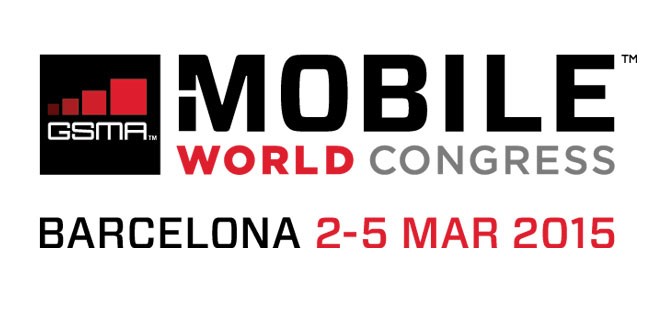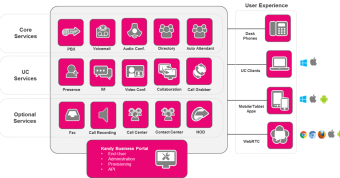A CMO’s Observations from Mobile World Congress and Enterprise Connect
 In the past, the audiences and market challenges of two significant industry events – Mobile World Congress (MWC) and Enterprise Connect (EC) – rarely intersected. Traditionally, MWC is dominated by global mobile operators talking to vendors in booths that are sometimes as large as several football fields. The more streamlined halls of EC are filled with communications companies of all genres looking to sell to the enterprise.
In the past, the audiences and market challenges of two significant industry events – Mobile World Congress (MWC) and Enterprise Connect (EC) – rarely intersected. Traditionally, MWC is dominated by global mobile operators talking to vendors in booths that are sometimes as large as several football fields. The more streamlined halls of EC are filled with communications companies of all genres looking to sell to the enterprise.

What seemed different this year was the appearance of some interesting commonalities in the challenges and needs facing both carriers and the enterprise. This intersection is being defined and driven by a unique mixture of powerful technology, financial, and cultural trends. These trends include: the power of the cloud, the unicorn valuations of OTT startups, and the “more human” communications demands from both consumers and in the workforce.
1. The Cloud
Observations at both MWC and EC made it very clear that cloud technology, in combination with mobile and data analytics, is dramatically increasing the pace at which businesses must adapt. While the enterprise cloud storyline is not anything new, what was different this year is the way that it is clearly driving the growth of unified communications and collaboration in the enterprise.
Why is this happening now?
I see that the increasing pace of cloud adoption for carriers and enterprise companies is being driven by two factors:
- The ease and speed of deployment that the cloud is offering for new communications applications and capabilities.
- A flexible modular approach vs. “all in only” for enterprise companies to migrate select communications needs at their own pace to the cloud, while leaving the rest of their legacy environment untouched.
2. OTT
The frothy talk of OTT startups and the breakneck pace of their global consumer adoption has certainly grabbed the attention of carriers. No one can afford to ignore a potential loss of $14B in the next year to current OTT players. The stats are staggering.
- WhatsApp, purchased a year ago by Facebook for about $19B, has 700M users generating 200M voice messages and 100M video messages a day. The average weekly use time of WhatsApp is 195 minutes.
- Skype, purchased by Microsoft in 2011 for $8.5B would by itself be among the top 10 telco operators in the world with its 300M users who generate 2 billion minutes of use/day.
MWC and EC provided interesting opportunities to see how carriers are choosing to respond now that “keeping one’s corporate head in the sand” is no longer a viable business option. I observed two different questions being asked by the carriers:
- Can I coexist with OTT apps by forming a relationship with one of the existing players?
- Can I make this communications transformation on my own by creating or white labeling a partners’ OTT offering?
However, I personally find the second choice to make better business sense as I would much rather be the master of my own fate. How do carriers need to change from both business and cultural perspectives? How do they compete technically with established nimble OTTs with significant head starts in the race for enterprise and consumer attention?
- From a business perspective, carriers need to lose some of their “risk-adverse, pro-perfection” heritage. Today, technology is no longer held for release until deemed “perfect by committee.” Time to market is extremely compressed. Products are continuously iterated in response to real market use.
- From a cultural perspective, carriers need to learn to identify and adapt to a fluid environment of changing customer expectations around communications quality and accessibility in their anytime/anywhere world. This goes beyond millennials and digital natives, cutting across all demographic groups demanding an increasingly rich personal communications ecosystem.
3. Embedded Communications:
Communications expectations have dramatically shifted. At both conferences, I saw proof of unprecedented cultural demand and technology enablers for embedding communications – everywhere.
Individuals, whether in the workforce or as consumers, no longer have the patience or inclination to want to go outside a website or app to look for a phone number to speak with a real person.
In the enterprise, workers need to be able to communicate and collaborate more effectively – with an experience reflecting the physical world even though they may be separated by floors in an office building, or thousands of miles. Accellion was a great example of this – using the addition of embedded communications to evolve their business from a large file transfer company to one built around an offering of secure collaboration via real-time video, talk and messaging.
Embedded communications is also changing expectations around customer service and commerce. Amazon’s Mayday with its “click-to-dial” capability was a bold technology move to back their claim as the “Earth’s most customer-centric company.” That’s hard to argue, with most of these calls answered within 15 seconds, 24 hours a day. Other software and customer facing companies have taken note and want to extend this approach with communications – and I am seeing some inklings of what may develop over the next year.
What might happen before next year’s MWC and EC?
No one has a perfect crystal ball for how these trends are interpreted for the industry I care deeply about – real-time communications.
I know that real-time communications will be pervasive and embedded. Beyond that, the level of success for carriers, the enterprise, and those who work with them is going to be about adapting business cultures, innovating on technology, and delivering solutions that perform, are flexible and scale. The trends of cloud, OTT, and platforms that enable communications embedding in Web and mobile environments – will all be a part of that process.
Some of the startup fans said at the conferences: “the best innovations are created by people who are outside the traditional big corporations.” I have a different perspective on this given the trends that I saw. Perhaps the most powerful and practical innovations may come from those who bring the innovation to and work closely with the big corporations.
I can’t wait to see the progress of the industry at next year’s MWC and EC.
Patrick




